The new Echo is a no-brainer. It’s smaller, sounds and looks better and, most importantly, it’s significantly cheaper than its predecessor. It was a long-awaited and much welcomed update to the line. The Echo Plus, on the other hand, is more baffling at first glance.
The device marks yet another addition to the ever-growing line, which now numbers at a half-dozen (seven, if you count the Amazon Tap, which the company occasionally does). The Plus is a third larger and a third pricier than the new Echo. Its features are largely the same as the new device, but its design is virtually the same as the original, albeit with a new coat of paint.
There is, however, one key difference — and for Amazon, at least, it’s a biggie. The company’s connected play has been, at best, pretty piecemeal. Amazon’s been mostly reliant on third parties to bring their functionality to Alexa. Sure, the Echo’s been able to control smart home devices since basically forever, but aside from simple voice activation, most of the heavy lifting has occurred outside of Amazon’s purview.
The one big difference between the two models (aside from the above) is the addition of a Zigbee radio. That means the Echo itself serves as a smart home hub, so you don’t have to run out and buy one from, say Samsung or Wink — that’s effectively another $70 or $80 you can factor into the product’s price tag, making the device’s $149 price tag more palatable compared to the standard Echo.
The more things change
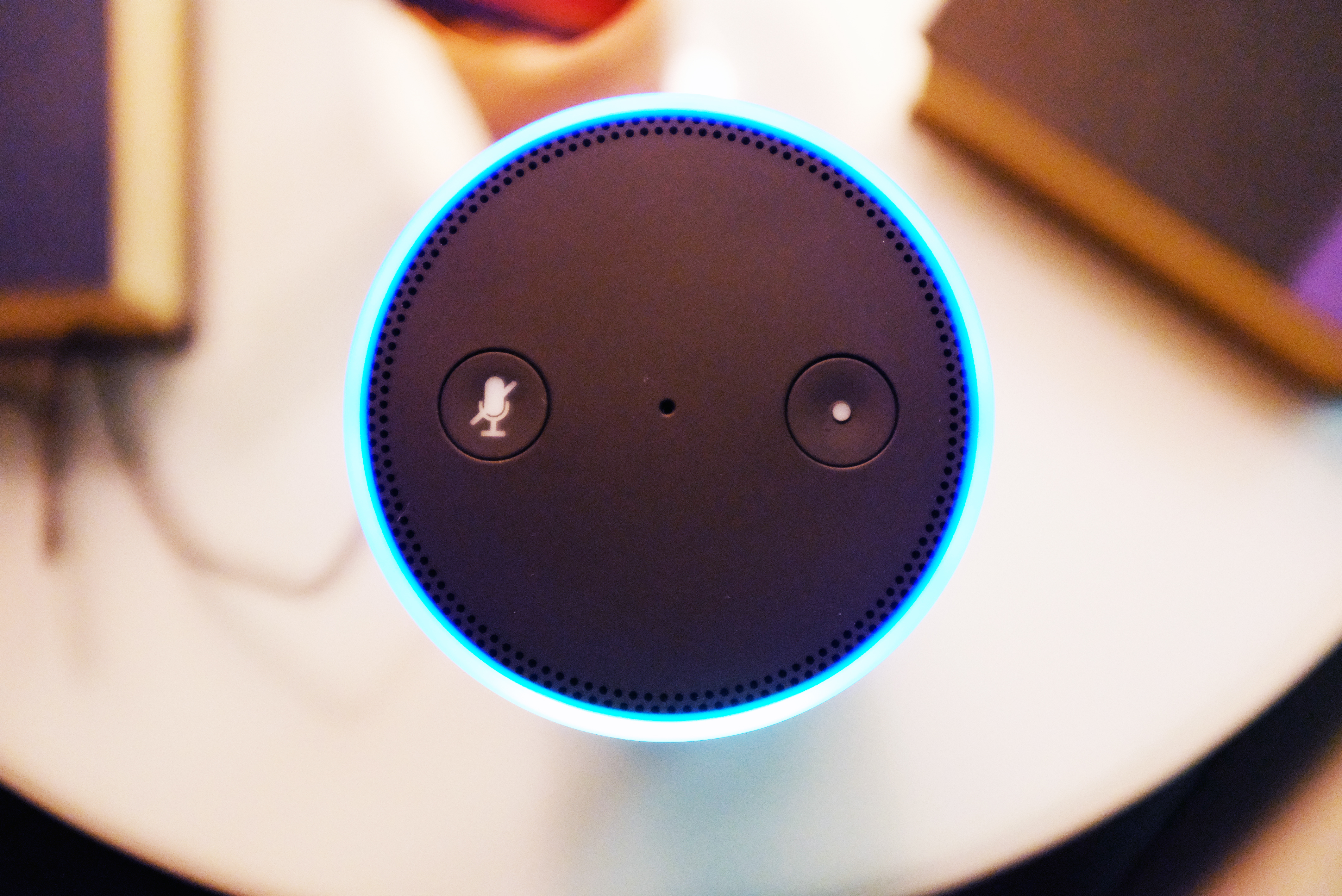
It’s worth giving our recent Echo review a read before heading any further — it touches on most of the upgrades that are also present in the Plus. We’ll be skipping some of those specifics this time out, but for the sake of a quick reminder, the audio has been amped up, courtesy of a 2.5-inch woofer and 0.8-inch tweeter (0.6 on the regular Echo). And if the Echo’s audio isn’t up to snuff, you can use Bluetooth pairing or the auxiliary out port on the back.
According to Amazon, the design language is virtually identical to its two-year-old predecessor because the company “wanted to keep the iconic design of the original Echo while making enhancements based on customer feedback.” That includes packing the product into the same long and skinny footprint and even trading the new Echo/Echo Dot’s devoted volume buttons for the volume dial up top.
The argument would be more compelling if the new Echo hadn’t arrived at the same time sporting a much nicer design. Maybe the company wanted to give users the option of buying a device in that original form factor — seemingly equally likely, the two products were simply developed on different tracks.
Either way, it’s hard to shake the feeling that the company wouldn’t have been better served finding a way to cram Plus functionality into the newer, stubbier Echo’s form factor. The product’s many swappable covers address a consumer desire for smart speakers that better blend into their environment, but, well, at least the company is offering the Plus in white and silver along with the original black.
Out of the box
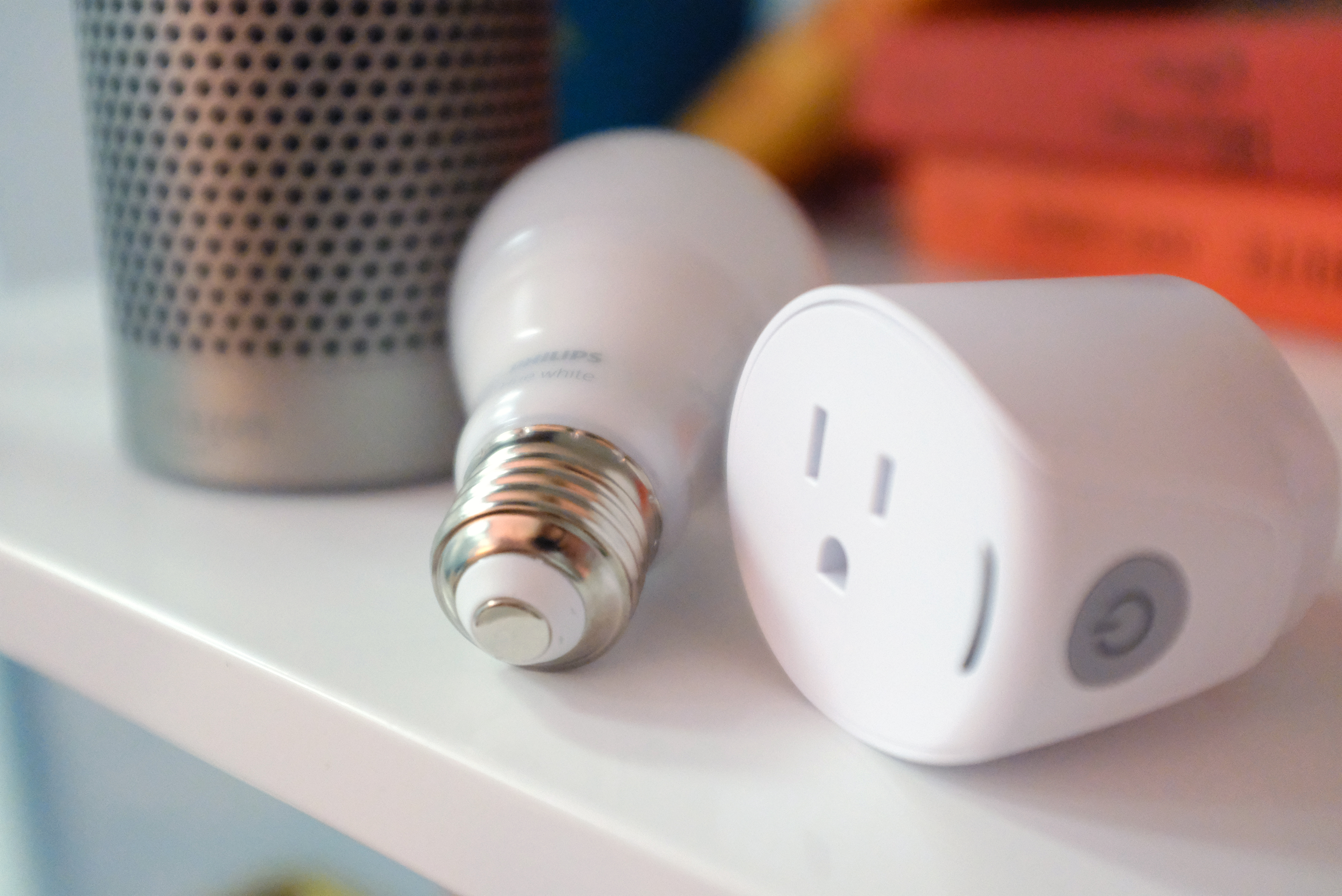
The arrival of the Plus marks more than just a new addition to the Echo line. It’s the start of a newfound focus on the smart home for Amazon. At the center of the update are some key overhauls to the Alexa app, bringing additional functionality to the entire line of devices. The company is still fine-tuning the integration at the time of this review, but the most immediate changes are some new additions to the app’s sidebar, namely: Smart Home and Routines.
The functions are a bit hard to discern at first — a bit of a bummer for a device that’s meant to work right out of the box. The distinction between Routines, Groups and Scenes is a bit tough to figure out — and indeed, there’s a fair amount of overlap between the three categories. Rule of thumb, though, Routines are essentially the Amazon equivalent of HomeKit’s scenes (“wake up” or “movie time”), Groups are meant to categorize tasks into rooms (“living room” or bedroom”) and Scenes rely on third-party skills.
Beyond that hiccup, setup is pretty simple. In the case of simpler smart home devices like light bulbs or outlets, just plug them in. For more complex devices, you’ll need to switch them into pairing mode. Then you just say, “Alexa, find my devices,” and the Echo goes to work. That part of the process should take about 45 seconds to complete — in the case of the Philips Hue bulb (which the company tosses in the package gratis) and Samsung’s SmartThings Outlet, the system had no issues finding the devices.
All told, the Plus should be able to get set up with hundreds of different devices out of the box. There’s a complete breakdown of the list on Amazon’s site, but it runs the gamut, across a wide range of devices from WeMo, TP-Link, Sony, Insteon and ecobee, among others. Once acknowledged, it gets added to the Alexa app under the New Devices tab. By default, each device is given a simple name, like, say, “First Light” and “Second Light,” though you can edit the name directly in the app.
App time
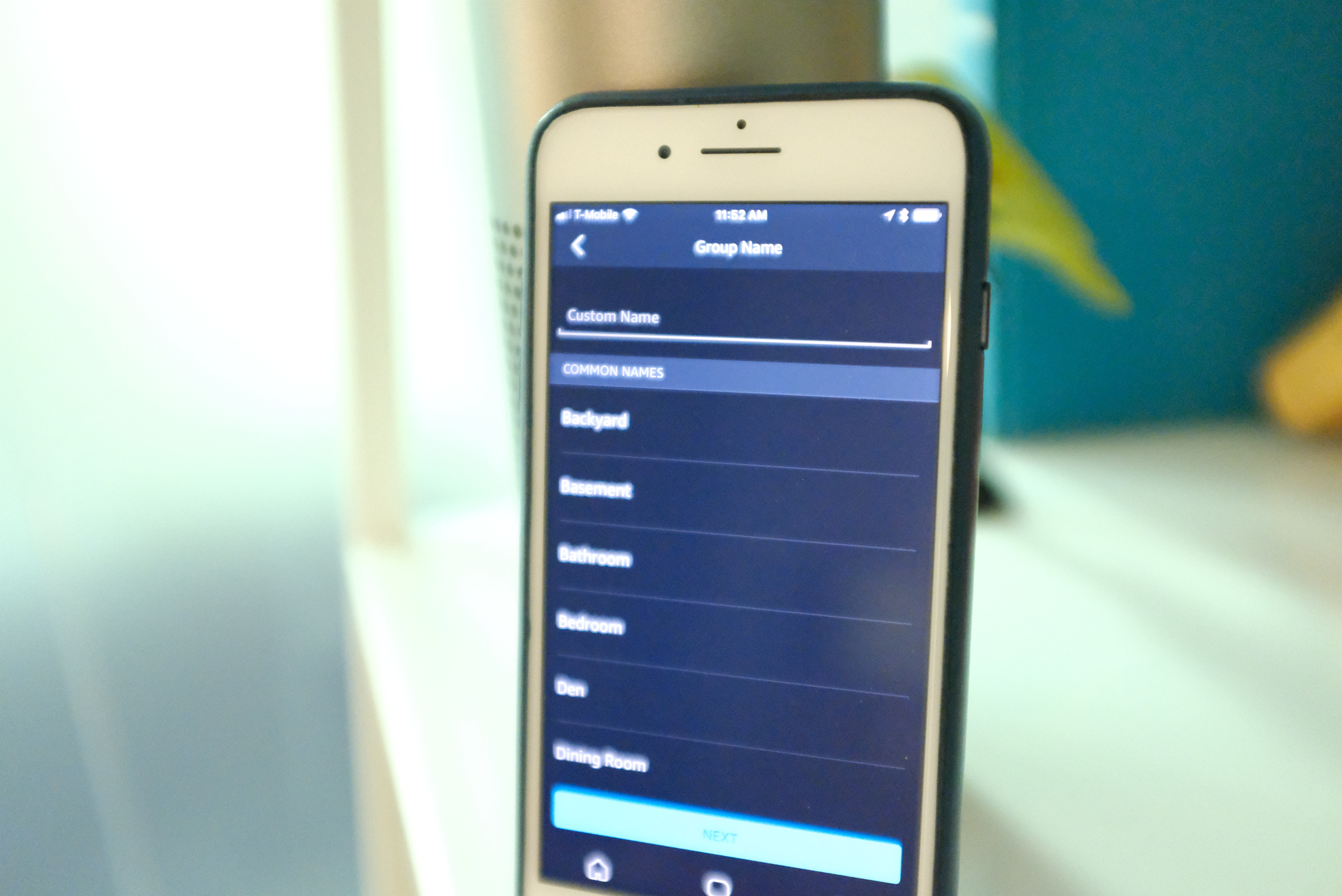
Amazon’s aim is to turn the Alexa app into something akin to Apple Home, offering up the various devices in a single application so you don’t have to download an additional app for everything you install. It’s a nice idea in principle, though actual control over each one is still relatively limited in its current state. With the light, for example, you can use the slider to manually dim, but you can’t, say, change the color.
The decision was no doubt made, in part, for the sake of keeping things streamlined. But beyond that, Amazon’s clearly interested in making voice the primary method for interacting with Alexa. As Apple, Google and Microsoft look to make their smart assistants work across different input methods, Amazon’s clearly interested at keeping voice the primary driver.
Voice is a great interface for myriad different tasks, but it’s often a pretty ham-fisted approach. There’s a reason, after all, that Amazon includes volume buttons on the Echo. If you’ve ever tried adjusting it with your voice, you know what a pain in the ass it is. Same qualifies for different smart devices; you don’t always want to adjust things by repeating the same thing over and over. Sometimes a simple slider does the trick.
Routines are pretty simple to set, as well. Click the “Plus” button under the tab, choose a vocal cue (like, “Alexa, good morning”) and then choose the actions you want bundled from News, Smart Home, Traffic and Weather. It’s a relatively small number of choices at the moment, but between them, you can create some decent tasks. There’s also an option for setting them at scheduled times, so you can, say, wake up to the news and traffic or have the connected thermostat kick in to warm up or cool off the house an hour before you get home.
Plus one
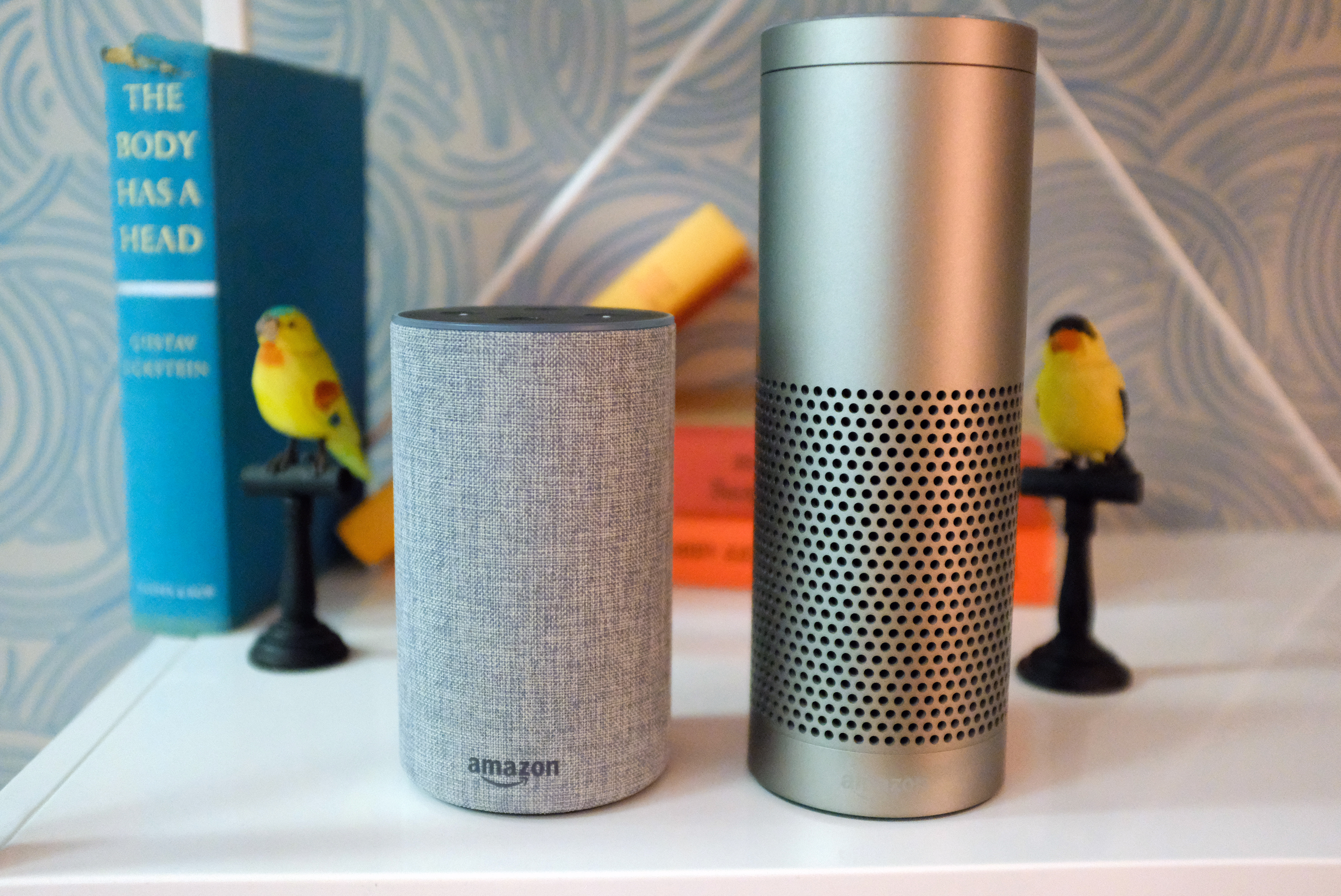
At $149, the Echo Plus is actually $30 cheaper than the original Echo — but that fact has undoubtedly been undercut by the new Echo’s $99 price tag. The addition of Zigbee functionality and a free Philips Hue light bulb sweetens the deal, but the Echo Plus still probably has a relatively limited appeal compared to the standard Echo. And honestly, I wouldn’t be too surprised to see smart hub functionality integrated into the regular old Echo in the near future.
For Amazon, however, the Plus represents a lot more than just hardware. This is the company’s opportunity to draw a line in the sand and take some important steps toward establishing Alexa/Echo at the center of the connected home space. Keep in mind, these smart home features are rolling out to Echos across the board, courtesy of the Alexa app.
The Plus exists more as an on-boarding tool, in order to make entering the age of connected homes a bit easier. It could, perhaps, be a good gift for a relative who’s expressed some interest in connected home devices, but has no idea how or where to start. For most of the rest of us, however, it’s destined to take a backseat to the standard Echo.
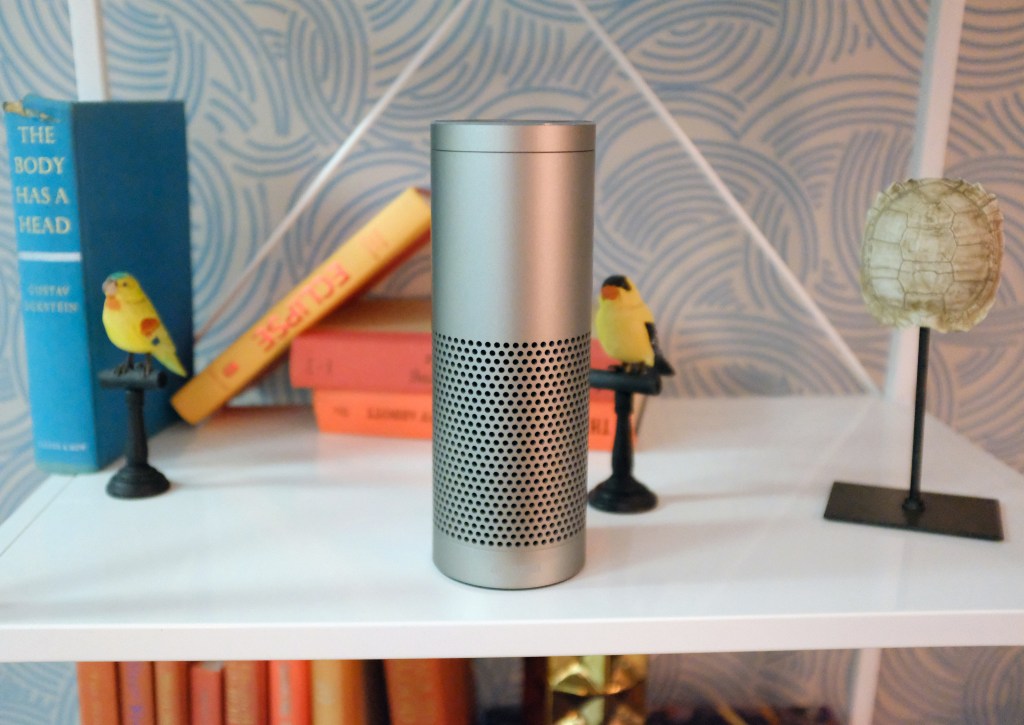





























Comment